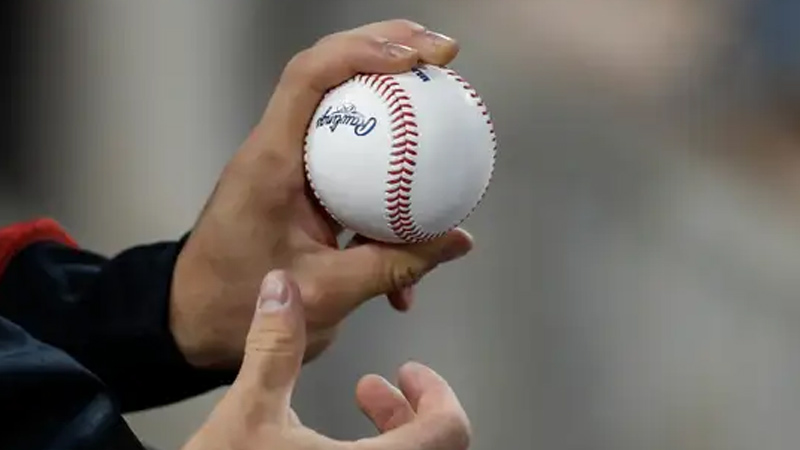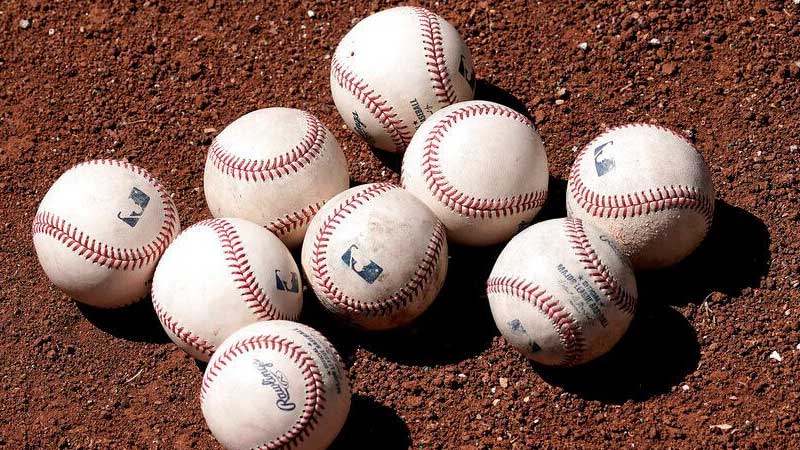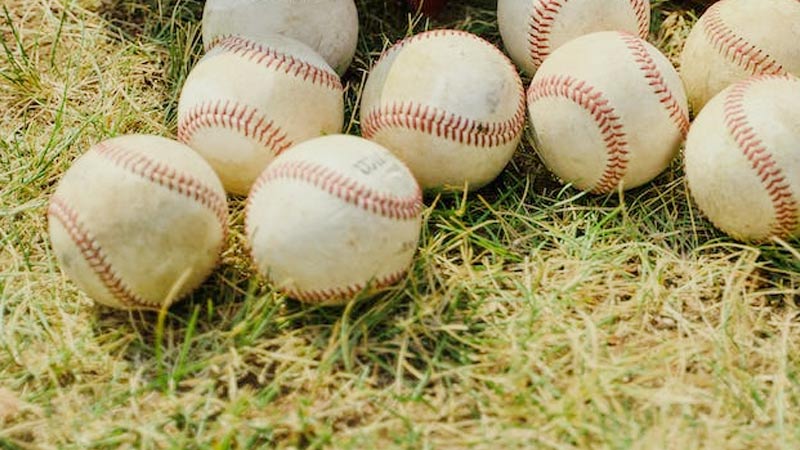Baseball, often referred to as America’s pastime, has captivated fans for generations with its unique blend of strategy, athleticism, and history. While the players and stadiums have evolved over time, one constant element of the game remains the baseball itself.
However, what many fans may not realize is that baseballs are changed frequently during games. This article explores why baseball changed so often and sheds light on the factors that contribute to the ever-changing world of baseball.
Why Are Baseballs Changed So Often?
The rule of replacing dirty baseballs, particularly about Ray Chapman’s death, is an important part of baseball history.
The Incident
Ray Chapman, a talented shortstop for the Cleveland Indians, tragically lost his life on August 16, 1920, as a result of being hit in the head by a pitched ball during a game.
At that time, baseballs were not regularly replaced during games unless they became significantly damaged or worn out. The use of dirty and discolored balls was a common practice.
However, Chapman’s tragic incident led to changes in the rules and regulations surrounding baseball to enhance player safety.
Increased Awareness
Ray Chapman’s death prompted a heightened awareness of the dangers associated with using worn and dirty baseballs during games. As a result, the baseball community recognized the need for a rule change to prevent similar accidents in the future.
New Rules
Following Chapman’s death, new rules were implemented to ensure the replacement of dirty or scuffed baseballs, which were more difficult to see and track for batters.
The specific details of the rule changes varied over the years, but generally, regulations were put in place to ensure the regular rotation and replacement of baseballs during games.
Umpires and officials were instructed to inspect the condition of baseballs regularly and replace them when they became discolored, scuffed, or otherwise compromised.
Overall Impact
The tragic incident involving Ray Chapman had a profound impact on the sport of baseball. It highlighted the importance of player safety and led to significant changes in the rules governing the use of baseballs.
The rule of replacing dirty baseballs became an integral part of the game, helping to mitigate the risks associated with using damaged or difficult-to-see balls.
What Is the Rule for Changing Baseballs?
The rule for changing baseballs in professional baseball varies slightly depending on the league and specific regulations in place. However, some general guidelines are followed to ensure fair play and maintain the integrity of the game.

Source: deadspin.com
Rule 3.01
In Major League Baseball (MLB), the official rule regarding changing baseballs is covered under Rule 3.01. According to this rule, the umpire has the authority to inspect and approve the baseballs to be used in a game.
The umpire has the discretion to remove from play any baseball that they determine is unfit for use, such as those that are scuffed, discolored, or otherwise damaged.
Rule 3.01(c)
Furthermore, MLB Rule 3.01(c) states that the umpire should replace the baseball whenever it becomes discolored or difficult to see. This rule was implemented in response to Ray Chapman’s tragic death and the need for player safety.
It ensures that pitchers are not allowed to use discolored or excessively dirty baseballs that may be harder for batters to track.
Frequency
The specific frequency of ball changes may vary depending on factors such as the league, game conditions, and umpire judgment. In MLB games, it is common for baseballs to be replaced several times throughout a game, especially if they become scuffed, soiled, or difficult to see.
Note: It’s important to note that the rules regarding baseball changes may also differ in other professional and amateur baseball leagues, but the general principle of replacing damaged or discolored baseballs to maintain fair play and player safety remains consistent across most levels of the sport.
What Does Scuffing A Baseball Mean?

Source: thelines.com
Scuffing a baseball refers to intentionally altering the surface of the ball by causing abrasions or marks on its outer covering. It is an act that is usually performed by a pitcher or a member of the pitching team in an attempt to manipulate the ball’s flight or movement.
How It’s Done?
Scuffing a baseball can be done in various ways, such as using a foreign object like sandpaper, emery boards, or sharp objects to scratch or rough up the surface of the ball.
Pitchers may scuff a baseball to gain an advantage by creating uneven aerodynamics, allowing the ball to behave unpredictably as it travels toward the batter.
Purpose
The purpose of scuffing a baseball is typically to increase the amount of movement on pitches, such as making breaking balls curve more sharply or making fastballs appear to have late movement.
By altering the ball’s surface, pitchers can exploit the altered flight characteristics to deceive hitters and make it more challenging for them to make solid contact.
Legality
It’s important to note that scuffing a baseball is considered illegal in professional baseball, including Major League Baseball (MLB). Rule 6.02(c) in the MLB rulebook explicitly prohibits pitchers from applying foreign substances or altering the baseball’s surface.
If a pitcher is caught scuffing the ball or using any other illegal substances to manipulate the ball’s flight, they can face penalties, including ejection from the game, fines, or suspensions.
Rules
Scuffing a baseball is seen as a form of cheating because it violates the rules and fairness of the game. The rules are in place to maintain a level playing field and ensure that the ball’s flight and movement are primarily determined by the skill of the pitcher and the natural characteristics of the ball.
When Baseballs Are Changed?
Baseballs are changed during a game under various circumstances to ensure fair play and maintain the quality of the balls being used. The specific instances when baseballs are changed can vary depending on the league and specific rules in place, but here are some common situations:
Pre-Game
Before a game begins, umpires inspect and approve the baseballs to be used. They ensure that the balls meet the required specifications, such as size, weight, and condition.
Damage or Wear
If a baseball becomes significantly damaged during play, such as splitting, unraveling, or losing its shape, it is immediately replaced. Umpires have the discretion to determine when a ball is no longer suitable for use.
Discoloration or Dirt
Baseballs can accumulate dirt, and scuff marks, or become discolored during the course of a game. Umpires may opt to replace a ball if it becomes difficult to see or if it appears overly soiled.
This rule was implemented to enhance player safety and prevent incidents like Ray Chapman’s death.
Pitcher’s Request
Pitchers are allowed to request a new baseball during their time on the mound if they believe the current ball is scuffed, slippery, or otherwise compromised. Umpires will generally honor such requests to maintain fair play.
Inning Changes
It is common practice in many professional leagues, including Major League Baseball (MLB), to change the baseball at the end of each half-inning. This helps maintain consistency and prevent teams from gaining an unfair advantage by using worn or scuffed balls.
How Long Does A Baseball Typically Last?
The lifespan of a baseball can vary depending on factors such as the level of play, game conditions, and the specific rules in place. However, in professional baseball leagues like Major League Baseball (MLB), a single baseball typically lasts for an average of 6 to 10 pitches.
Inside A Game
During a game, baseballs are subjected to a variety of factors that can affect their condition. The impact of being hit by bats, contact with the ground, pitching velocity, and the type of pitches thrown all contribute to the wear and tear on a baseball.
Additionally, the condition of the playing surface, weather conditions, and the actions of the players can also influence the lifespan of a ball.
Inspection and Replacement
To maintain fair play and ensure consistency, baseballs are regularly inspected and replaced as needed. Umpires monitor the condition of the baseballs and remove any that are significantly damaged, scuffed, or soiled.
They also replace balls that have become difficult to see or have lost their optimal flight characteristics.
Professional Games
In professional baseball games, it is common for multiple baseballs to be used throughout the course of a single game. Balls are often changed at the end of each half-inning, ensuring that pitchers and batters have access to fresh, playable balls.
It’s important to note that the lifespan of a baseball can be shorter in certain situations. For example, during batting practice or in lower-level leagues where balls may not be of the same high quality as those used in professional play, baseballs may wear out more quickly and require more frequent replacement.
FAQs
How often are baseballs changed during a game?
Baseballs are typically changed multiple times throughout a game, depending on factors such as wear and tear, damage, and player preference. There is no fixed number of ball changes, but it is common for new baseballs to be introduced whenever the current one becomes compromised or unfit for play.
Can players request a specific baseball during a game?
Players, particularly pitchers, may have a preference for a specific baseball due to its feel or grip. While umpires generally have the discretion to honor such requests, they also prioritize maintaining fairness and preventing any potential advantage.
If a preferred baseball is deemed unfit for play or significantly damaged, it will be replaced with a new one.
What happens to the used baseballs after they are changed?
Used baseballs are typically collected and inspected by league officials. Some balls may be repurposed for batting practice or training sessions, while others may be auctioned for charity or sold to collectors.
The fate of the used baseballs depends on their condition and specific league policies.
Do ball changes impact the flow of the game?
Ball changes are typically quick and efficient, minimizing any disruption to the flow of the game. Umpires usually have a stash of new baseballs readily available to ensure a seamless transition. The process of replacing a baseball usually takes only a few seconds, allowing the game to continue without significant interruptions.
How does MLB prevent ball tampering during games?
Major League Baseball (MLB) has implemented stricter guidelines and increased scrutiny to prevent ball tampering. Umpires regularly inspect the baseballs for any irregularities, and there are strict penalties for pitchers found in violation.
Bottom Line
So, now you know why baseball changed so often. The frequent changing of baseballs during games is not a random or unnecessary process but a vital component of the sport. It ensures quality, consistency, safety, fairness, and the preservation of the game’s integrity.
By adhering to strict regulations and maintaining control over the baseballs used in professional games, MLB is committed to upholding the highest standards of play. So the next time you watch a baseball game, take a moment to appreciate the efforts made to keep the game fair and exciting, right down to the ball itself.







